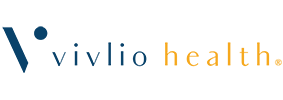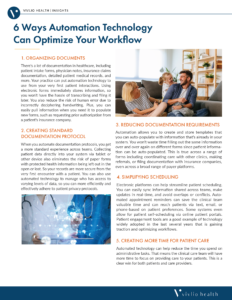We all want to improve our efficiency on the job. When caring for patients, it’s especially important to get rid of outdated or time-consuming processes and procedures. Unfortunately, some medical practices haven’t caught up with all the possibilities automated technology has to offer.
Automation technology makes day-to-day operations more efficient and accurate. This includes filling out forms, filing, scheduling appointments, maintaining patient records, and securely sharing patient health information. This technology can help you save time, easily identify trends or areas for improvement, and keep secure records that are easy to access and analyze.
Here are just six reasons why your clinical care team should take advantage of automation technology.
1. Organizing Documents
There’s a lot of documentation in healthcare, including patient intake forms, physician notes, insurance claims documentation, detailed patient medical records, and more. Your practice can put automation technology to use from your very first patient interactions. Using electronic forms immediately stores information, so you won’t have the hassle of transcribing and filing it later. You also reduce the risk of human error due to incorrectly deciphering handwriting. Plus, you can easily pull information when you need it to populate new forms, such as requesting prior authorization from a patient’s insurance company.
2. Creating Standard Documentation Protocol
When you automate documentation protocols, you get a more standard experience across teams. Collecting patient data directly into your system via tablet or other device also eliminates the risk of paper forms with protected health information being left out in the open or lost. So your records are more secure from the very first encounter with a patient. You can also use automated technology to manage who has access to varying levels of data, so you can more efficiently and effectively adhere to patient privacy protocols.
3. Reducing Documentation Requirements
Automation allows you to create and store templates that you can auto-populate with information that’s already in your system. You won’t waste time filling out the same information over and over again on different forms since patient information can be auto-populated. This is true across a range of forms including coordinating care with other clinics, making referrals, or filing documentation with insurance companies, even across a broad range of payer platforms.
4. Simplifying Scheduling
Electronic platforms can help streamline patient scheduling. You can easily sync information shared across teams, make updates in real-time, and avoid overlaps or conflicts. Automated appointment reminders can save the clinical team valuable time and can reach patients via text, email, or phone-based on patient preferences. Some systems even allow for patient self-scheduling via online patient portals. Patient engagement tools are a good example of technology widely adopted in the last several years that is gaining traction and optimizing workflows.
5. Creating More Time For Patient Care
Automated technology can help reduce the time you spend on administrative tasks. That means the clinical care team will have more time to focus on providing care to your patients. This is a clear win for both patients and care providers.
6. Making the System More Accessible
New legislation as part of the Cures Act encourages the secure sharing of patient health records with patients and other providers to promote better health outcomes. This will require enhanced interoperability between apps and other platforms, something Vivlio helps healthcare providers with every day.
If you’ve been in healthcare for a long time, transitioning to automated technology can seem like a big leap. We’re confident this step will optimize your workflow and improve patient care, with easier, more secure record-keeping and data-sharing capabilities. Whether your practice is working to meet Cures Act requirements or simply needs to free up time to dedicate to patient care, Vivlio can help. Let’s talk about how automation and a best-in-class focus on interoperability can help your practice meet the needs of today’s changing healthcare landscape.
We’ll walk you through what these new rules mean for your practice, and how you can leverage automation to optimize your workflow.




